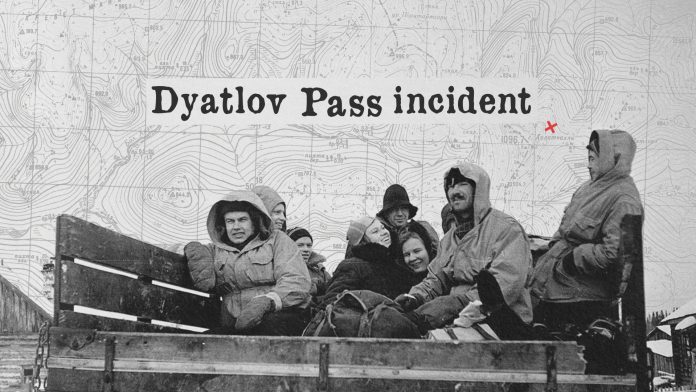In the remote Ural Mountains of Russia lies a place shrouded in mystery and intrigue—the Dyatlov Pass. The incident that occurred there in 1959, now known as the Dyatlov Pass Incident, continues to baffle experts and enthusiasts alike. What started as a routine hiking expedition ended in tragedy, leaving nine experienced mountaineers dead under perplexing circumstances. Decades later, the truth behind their untimely demise remains elusive, fueling numerous theories and speculations. In this blog, we delve deep into the Dyatlov Pass Incident, exploring its various aspects and attempting to unravel the enigma that has captivated the world for generations.
In January 1959, a group of ten experienced hikers embarked on a trek to reach the Otorten Mountain in the northern Ural region of the Soviet Union. Led by Igor Dyatlov, a seasoned outdoorsman and engineering student, the group consisted of eight men and two women, all of whom were members of the Ural Polytechnical Institute. Their goal was to reach the summit of Otorten, a challenging endeavor even for seasoned mountaineers.
As the expedition progressed, communication with the outside world ceased, prompting concern among the hikers’ relatives and authorities. A search and rescue operation was launched, eventually leading to the discovery of the hikers’ campsite on the slopes of Kholat Syakhl, or “Dead Mountain,” on February 26, 1959. What the search party found was a scene of utter confusion and horror. The tent, which had been cut open from the inside, lay abandoned, with the hikers’ belongings scattered around. Footprints led away from the tent, some barefoot and others wearing only socks, indicating that the hikers had fled in haste, despite the freezing temperatures.
As the search party followed the tracks, they made a series of grim discoveries. The bodies of the hikers were found scattered across the snow-covered landscape, some partially clothed and exhibiting signs of severe trauma. One hiker had a fractured skull, while others showed evidence of internal injuries and broken bones. Strangely, there were no external wounds or signs of struggle, leading investigators to question what could have caused such injuries.
In the aftermath of the Dyatlov Pass Incident, investigators and researchers put forth numerous theories to explain the mysterious deaths of the hikers. Some proposed natural explanations, such as an avalanche or a sudden gust of wind, while others suggested more outlandish theories involving military testing, UFOs, or even an attack by the local Mansi people. However, none of these theories fully account for all the evidence and circumstances surrounding the incident, leaving the true cause of the hikers’ deaths open to speculation.
In recent years, advances in technology and forensic science have reignited interest in the Dyatlov Pass Incident. Researchers have revisited the case, conducting new investigations and analyses in an attempt to uncover the truth. Some have proposed that infrasound, a low-frequency sound wave undetectable to the human ear, could have triggered panic and disorientation among the hikers, leading to their tragic demise. Others have suggested that a phenomenon known as a “Kármán vortex street” could have created unusual wind patterns that contributed to the incident.
Despite decades of investigation and speculation, the Dyatlov Pass Incident remains one of the most enduring mysteries of the modern era. The circumstances surrounding the deaths of the hikers defy easy explanation, leaving countless questions unanswered and fueling endless debate and speculation. While various theories have been proposed to account for the incident, none have been able to fully capture the complexity and strangeness of what transpired on that fateful night in the Ural Mountains. As the mystery of the Dyatlov Pass Incident continues to captivate the imagination of people around the world, it serves as a reminder of the enduring power of the unknown and the boundless mysteries that lie waiting to be discovered in the farthest reaches of our world.























